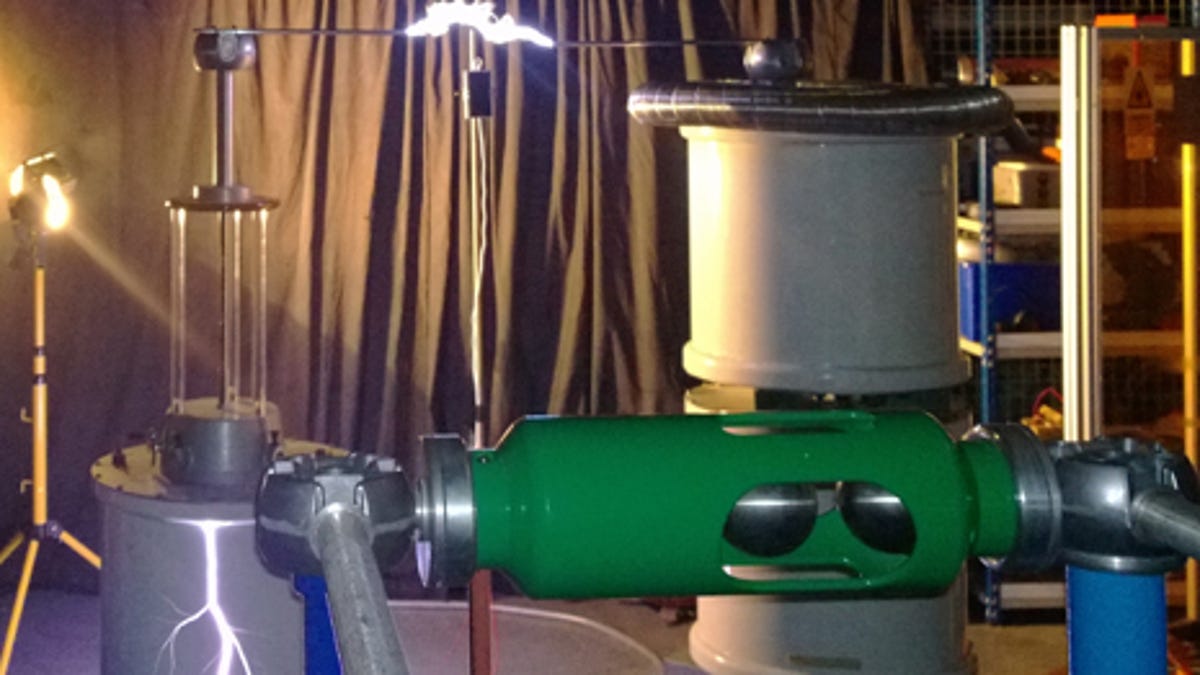Scientists charge mobile phone with lightning
Scientists at the UK's University of Southampton have harnessed the power of artificial lightning bolts to charge a Nokia Lumia 925. Nokia Lumia 925, we hereby dub thee "Adam."

Meet the post-modern Prometheus. It's not a monster made out of cadaver parts that University of Southampton scientists have brought to life with the power of lightning, but a rather smaller target: the Nokia 925 smartphone.
Nokia recruited a team led by Neil Palmer, manager of the Tony Davies High Voltage Laboratory, for the undertaking. Using the lab's equipment, the team created artificial lightning bolts, which were captured, tamed, and channeled into the smartphone's battery.
"Using an alternating current, driven by a transformer, over 200,000 volts was sent across a 300mm gap, giving heat and light similar to that of a lightning bolt," Palmer explained. "The signal was then stepped into a second controlling transformer, allowing us to charge the phone."
What happened next was a surprise, the scientist said.
"We were amazed to see that the Nokia circuitry somehow stabilized the noisy signal, allowing the battery to be charged in only seconds."
According to Palmer, this experiment proves that a device can be charged by an airborne current. However, we don't recommend standing out in a lightning storm waving your dead phone around like a lunatic semaphore signaller. In fact, lightning -- proper, atmospheric lightning -- is still far too dangerous and unpredictable for use in experiments, never mind practical applications.
You can check out the experiment in the video below. Nokia Lumia 925, we hereby dub thee "Adam."
(Source: Crave Australia)

